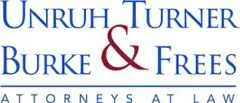Commercial real estate transactions are typically complex transactions that require all parties to do their due diligence to avoid future problems. Whether you are a commercial property owner or a prospective buyer, it is imperative that you understand how the existence of an easement impacts the real estate and your ownership and use thereof.
What is an Easement?
An easement is a non-possessory, limited right to use the property of another for a definitive purpose. An easement appurtenant involves two parcels of land: the servient tenement and the dominant tenement. The servient tenement allows for the easement while the dominant tenement benefits from the easement. An easement that allows one landowner (the dominant tenement) to drive over the land of another landowner (the servient tenement) is an example of an easement appurtenant. This type of easement usually runs with the land, meaning the easement passes from one owner to the next indefinitely.
An easement in gross does not have a dominant tenement. Instead, there is a servient tenement and a party who benefits from the easement. For example, a utility company might have an easement in gross allowing the company to run power lines across the land of the servient tenement. This type of easement does not usually run with the land but can be delegated or assigned to a new beneficial party.
How Do I Know if an Easement Exists?
An easement may be clearly defined in the property deed but that is not always the case. An easement may also be implied, may arise out of necessity, or may be created with the passage of time. An implied easement may arise when a landlocked parcel of land is sold, and the parties fail to provide for an easement allowing access to a public thoroughfare. The law allows for the granting of an implied easement to allow the landlocked property owner access to a public roadway. In Pennsylvania, the following elements must exist to create an easement by necessity:
- The titles to the dominant and servient properties must have been previously held by one person.
- The unity of title must have been severed by conveying either the dominant or servient estate.
- The easement must be necessary for the owner of the dominant estate to use his or her land, and that necessity must have existed both at the time the land was severed and at the time the easement is granted.
A prescriptive easement may be created with the passage of time. If a landowner uses the land of another in an "open, notorious and uninterrupted" manner for 21 consecutive years, a prescriptive easement may be created.
Considerations When Entering Commercial Real Estate Transactions
As a commercial property owner or prospective owner, it is important to research the existence or potential existence of an easement on land you are selling or purchasing because it can directly impact the value and use of the land. While a thorough title search is an essential first step, consideration should also be given to the existence of an implied, necessary, or prescriptive easement that may not be uncovered in a title search.
Originally published 20 July 2023
The content of this article is intended to provide a general guide to the subject matter. Specialist advice should be sought about your specific circumstances.

